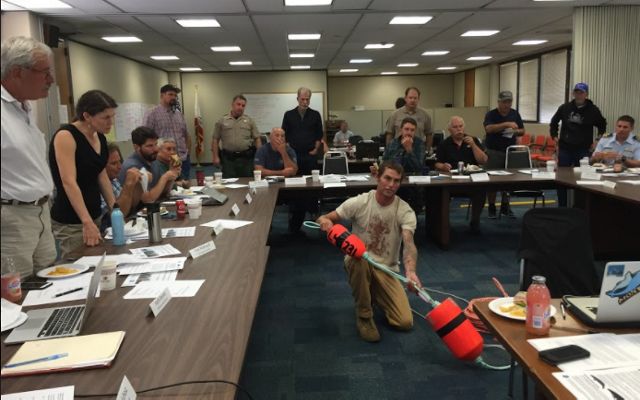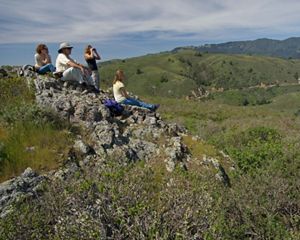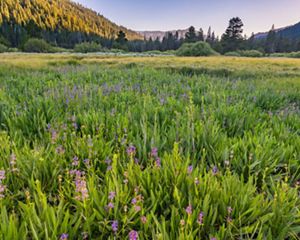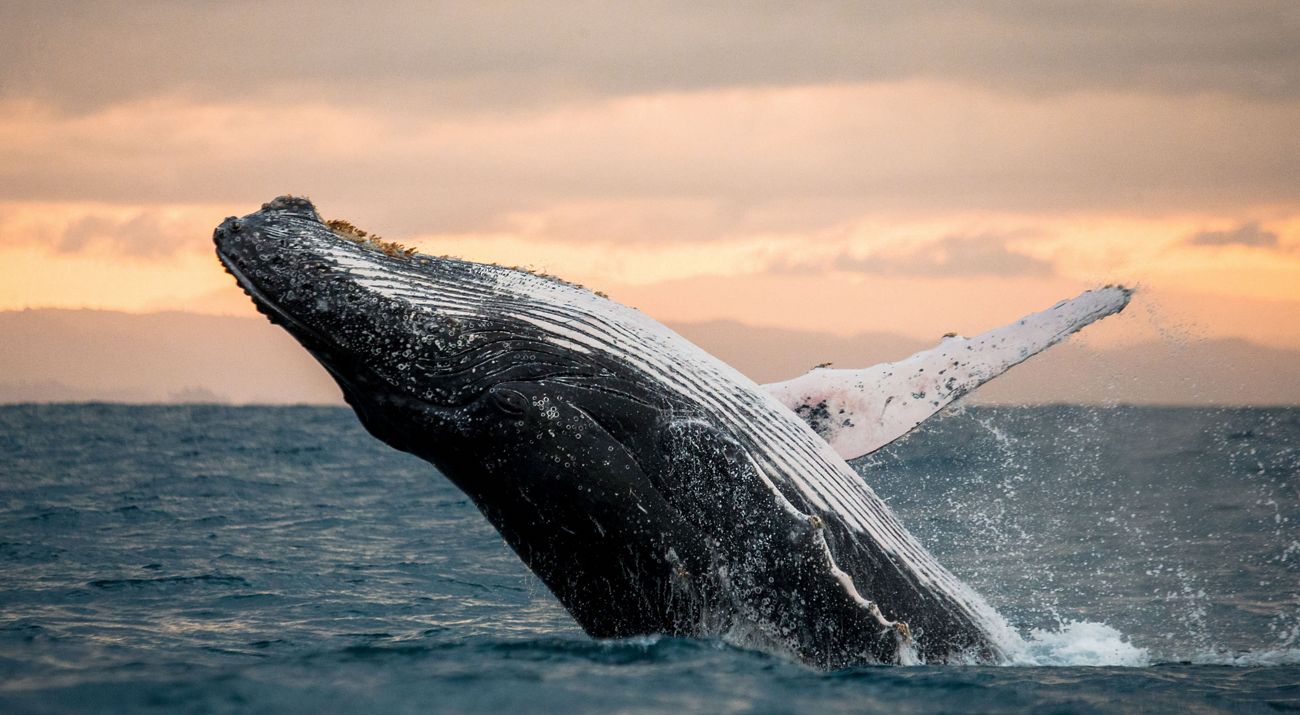
Large scale commercial whaling devastated whale populations for centuries, but despite this brutal practice coming to an end, whales face numerous threats—entanglement in fishing gear is one of the most dangerous.
Each year, hundreds of thousands of marine mammals, including whales, suffer from accidental entanglement in the ropes, buoys, and nets that fishermen set out in the ocean around the world. It’s the leading human-induced cause of whale mortality world-wide. Once entangled, whales can sometimes continue to swim for hundreds of miles with fishing gear attached to them. Towing heavy fishing gear makes it difficult for them to eat, move, and reach the surface to breathe.
This global conservation problem recently intensified along the coast of California, as widespread warm water conditions created by a large Marine Heatwave off the West Coast shifted whale migration and fishing season patterns, putting whales in the path of highly active trap fishing areas. This contributed to a sudden increase in whale entanglements.
Over the last three decades, entangled whales were reported along the coast of California.
Over half of them were reported in the last 6 years alone.
With partners, we’re implementing whale protections that have already contributed to reducing entanglements > 50% from peak levels.
Entanglement in fishing gear is a dynamic conservation challenge, made more complex by climate change. TNC is working to refine and advance science and tools to better monitor and mitigate entanglement risk to whales off California, and leverage these proven solutions to reduce entanglement risk and other threats to whales in high risk areas around the world.
We have developed a two-pronged strategy to protect whales from fishing gear entanglement:
Reducing Risk of Whale Entanglement
-

Leveraging Partnerships for New Solutions
We funded a Working Group of fishermen, scientists, conservationists and fishery managers to develop solutions to reduce entanglement risk. This included an early warning system to assess danger and take action to protect whales in near real-time.
-

A New Model for Lost Gear Recovery
Together with fishermen, we built a tech-driven and self-funding program to get lost fishing gear out of the ocean and out of the way of whales.
Improving Response to Free Whales
-
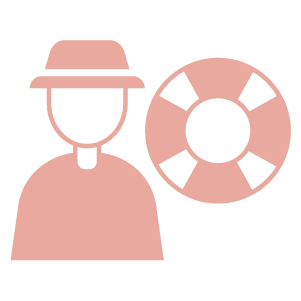
Expanding a Network of First Responders
Through in-person and online courses, we are training fishermen and others as eyes-on-the-water to identify and help free entangled whales.
-

Better Tracking for Entangled Whales
We are developing and deploying new technology that will help entanglement response teams more efficiently locate and free entangled whales.
Reducing Risk
Leveraging Partnerships for New Solutions
In response to urgent concerns around increasing entanglements of humpbacks, blue whales, and gray whales off California, specifically in Dungeness crab fishing gear, the Conservancy joined with fishermen, state and federal fishery managers, scientists and other conservation organizations to form the Dungeness Crab Fishing Gear Working Group to understand and address whale entanglements in California.

Reducing Risk
-
2015
Lost Gear Recovery Pilot Launch
-
2016
Best Fishing Practices Guide Released
-
2017
Entanglement Early Warning System Launched
-
2020
Fishermen use CrabGear tool to recover >2,000 lost traps
Quote: Jennifer Humberstone
With a range of collaboratively designed conservation measures in place, whale entanglements in California commercial Dungeness crab gear have remarkably decreased, from a peak of over 20 in 2016 to 5 in the past 3 years combined.
To reduce the risk of entanglements in crab gear, the Working Group first sought to change fishing practices because whales were getting caught in excess ropes and surface buoys. To address this, the group created a best practices guide that recommended how to configure ropes and buoys without creating risks for whales. This guide is currently being used by fishermen, and informed the development of regulations to ensure surface buoys and ropes are minimized to protect passing whales.
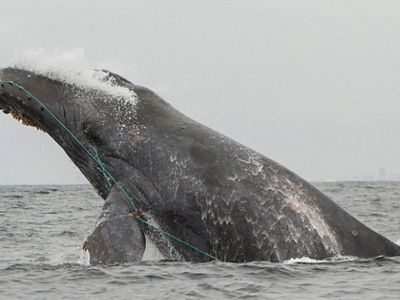
LAUNCHING AN EARLY WARNING SYSTEM
Next, using data showing the impact of ocean temperatures on the abundance and distribution of whales' food sources, like krill and anchovy, the Working Group developed a first of its kind early warning system that uses near real-time data to monitor for conditions of elevated entanglement risk. Once risk is detected, the Working Group, in partnership with the California Department of Fish and Wildlife (CDFW), recommends targeted measures to reduce risk before an entanglement occurs.
Quote: Tom Dempsey
With partners, we used this information and other details like fishing season timing and whales’ food source locations to pilot an early warning system that would allow fishermen and managers to track these risks in real-time.
This program—the Risk Assessment and Mitigation Program or RAMP—was so successful that the State Legislature directed CDFW to formalize it in regulation (Senate Bill 1309, McGuire 2018). Additionally, the Joint Committee on Fisheries and Aquaculture of the California State Legislature awarded the group a resolution honoring its achievements, including the RAMP. In its first weeks in operation as a regulatory program in 2020, the Working Group and CDFW used near real-time data to make the difficult decision to postpone the opening of the crab fishing season to protect whales present on the fishing grounds. As a result, whales were able to safely migrate out of the fishing grounds before crab fishing began.
These successes also caught the attention of then Governor Brown who secured $7.5 million to further advance and expand this approach across California fisheries. TNC co-hosted the first-ever West Coast Entanglement Science Workshop in the fall of 2020 to help inform state investment of these funds in the next generation of research and tools to protect whales from fishing gear entanglement.
To guide other fisheries in the advancement of collaborative solution-building, TNC published a case study documenting key learnings from the Working Group.
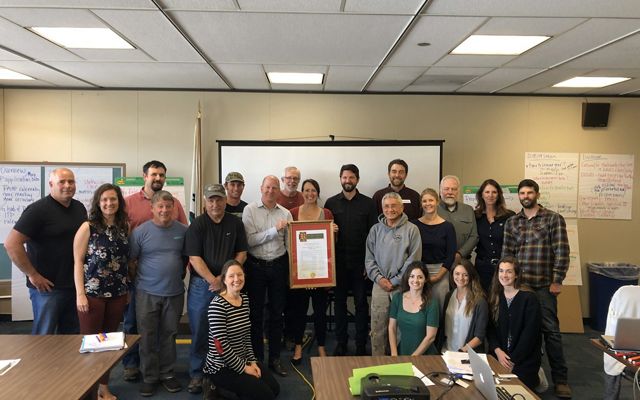
A NEW MODEL FOR LOST GEAR RECOVERY
Crab fishing gear can also get lost, especially during stormy weather. In some years, this means that thousands of crab pots and their connecting lines are left in the ocean, putting whales at risk of entanglement. Working with partners at the McClintock Lab at UCSB and in the fishing industry, TNC developed a tool and an innovative business model that is helping fishermen retrieve lost crab gear for a payment, all before the unwatched ropes can snag a whale. Recovered gear is returned to its owner for a fee, providing revenue that allows each port to sustain the program year after year.
We started with one port in 2015 and developed a first generation gear spotting tool at the 2016 Fishackathon. The program was then formally sanctioned by the state, and in its first year of operation, seven major crab ports from Monterey to the Oregon Border participated, reporting more than 630 lost traps. Today, fishermen operate equipped with a next generation web and phone application—CrabGear—that seamlessly tracks lost gear from at-sea recovery through sale back to its original owner. Since 2015, fishermen have recovered more than 2,000 lost traps from the ocean, equivalent to approximately 200,000 pounds or 100 tons of fishing gear that otherwise would have remained in the ocean as lethal marine debris.
We are now working to expand use of our lost gear toolkit in California and other regions of the world.
Improving Response
EXPANDING A NETWORK OF FIRST RESPONDERS
Improving the effectiveness of the entanglement response to free whales was also a priority. When a whale is reported as entangled, teams of trained responders try to locate that whale and cut it free of the gear. However, these networks are typically small and poorly resourced. In 2018, TNC helped train nearly 250 fishermen first responders (20 times more than there were in 2015) through a series of in-person workshops and also developed a free online training courses in partnership with NOAA. These workshops were customized to meet the needs of the West Coast, Alaska, Pacific Islands and East Coast regions. As of August 2021, more than 450 people have graduated from the online courses—an early milestone in our goal to create the people power needed to help whales in distress.
Improving Response Highlights
-

2017
Redesign of whale rescue buoy catalyzed by workshop
-
2018
250 fishermen trained as disentanglement first responders
-
2019
Free online courses for disentanglement first responders
-
2021
More than 450 people graduated from online training courses
BETTER TRACKING FOR ENTANGLED WHALES
Additionally, TNC is working with NOAA and two innovative design firms, Level 2 Industries and IDEO, to redesign the tracking devices that are attached to entangled whales when a first responder is unable to free the whale on the first try. These devices allow responders to locate and disentangle whales at a later time, when they can rally the people and supplies. The commonly used devices are heavy and can exacerbate injuries to whales, so the group is collaborating to develop and test a redesigned device that would improve hydrodynamics, reduce cost and implements leading edge tracking technologies.


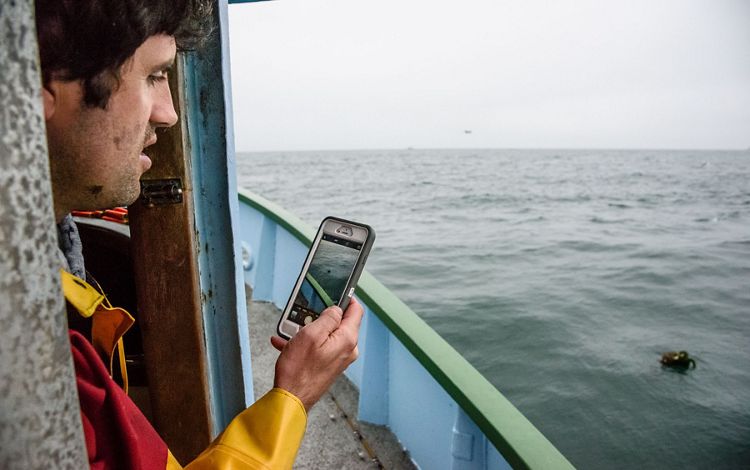
In Our Own Words
Dungeness Crab Q&A with TNC Fisheries Project Director Jenn Humberstone
12/10/2020 - This season, you might have noticed Dungeness crab missing from the Thanksgiving table. That wasn’t an accident, it was the work of a whale protection coalition composed of fishermen, fisheries managers, scientists and conservation organizations including TNC. In today’s oceans, the number one source of human-caused whale mortality isn’t hunting, it’s entanglement in fishing gear. The many lines that connect crab traps to the surface can be especially dangerous. To protect whales, this group worked with the state to postpone Dungeness crab season, under a first-of-its-kind management program for California.
We spoke with TNC Fisheries Project Director Jenn Humberstone, who serves as a member of the working group, about the science and collaboration that led to this decision.
How did your team get involved in this work?
When we saw a sudden uptick in whale entanglements off of California, we recognized an urgent conservation challenge. We acted fast, bringing our strengths and leveraging science and partnerships to build innovative real-world solutions. The solutions we build with the California commercial Dungeness crab fishery can help other fisheries reduce impacts as well. Our investments here can help protect whales across the globe.
What is TNC’s role in implementing this program?
TNC was a founding member of the working group, the coalition of partners that determines when and how to fish safely for crab. Our team made strategic investments to support the group and its key initiatives, including a first-of-its-kind early warning system to assess and respond to entanglement risk formalized in regulation on November 1. We invested in foundational science to create the program, and our priority now is ensuring its ongoing success. To do this we are developing the next generation of science and tools to radically improve the availability of key information that allows us to evaluate entanglement risk in real-time.
The working group decided to postpone the commercial crab season across the state this year. What are the negative impacts of this decision on the industry?
Thanksgiving is the traditional kick-off to the regional Dungeness crab fishing season, and providing crab for the holiday is an opportunity that fishermen and fishing communities rely on. A decision to postpone means no income to fishermen, their crew, and the downstream businesses that buy and sell crab. In postponing the fishery opener, fishermen have made a sacrifice to protect whales and to protect the long-term sustainability of the fishery.
It seems like fishermen chose to make a lot of sacrifices this season, how did the working group come together to make those decisions?
The ability of this group to make a tough decision like this demonstrates the power of this collaborative approach. The working group brought diverse and at times adversarial interests together--fishermen, managers, scientists, and conservationists--around a shared goal of thriving whale populations and a thriving fishery. Rooted in this common goal, we have built a shared, science-based understanding of the issue. What we saw in November was that this group relied on data, rather than entrenched positions, to make a decision to postpone the opening of the fishery.
What’s next for this work?
Our goal is to promote healthy whale populations and healthy fisheries by engaging fishermen as part of the solution. We are committed to enduring conservation outcomes in the California Dungeness Crab fishery, the fishery on the forefront of tackling this challenge on the West Coast. We’re also leveraging the scientific advances, tools and solutions we develop off our coast to help other fisheries protect whales in and beyond California.

